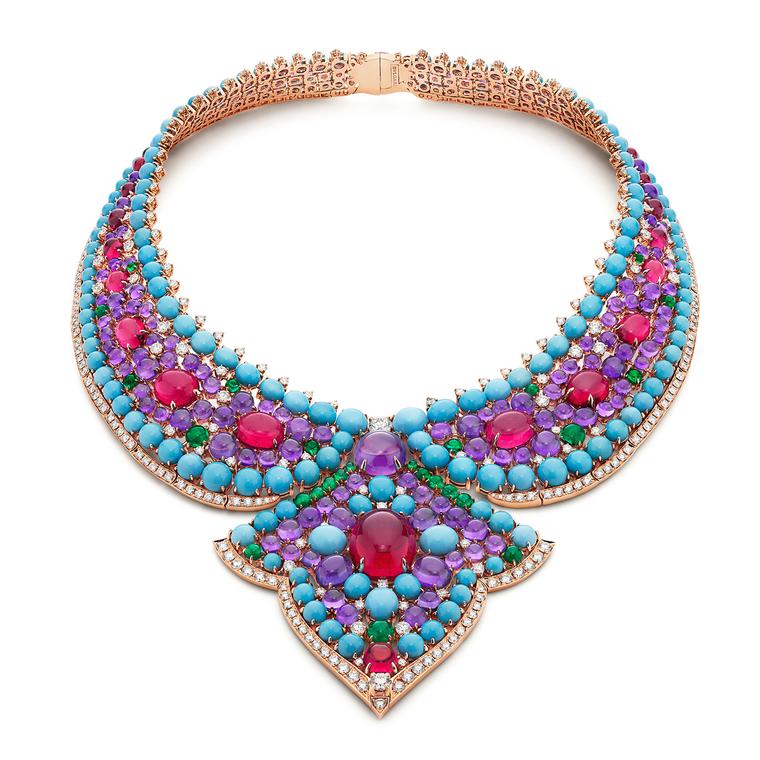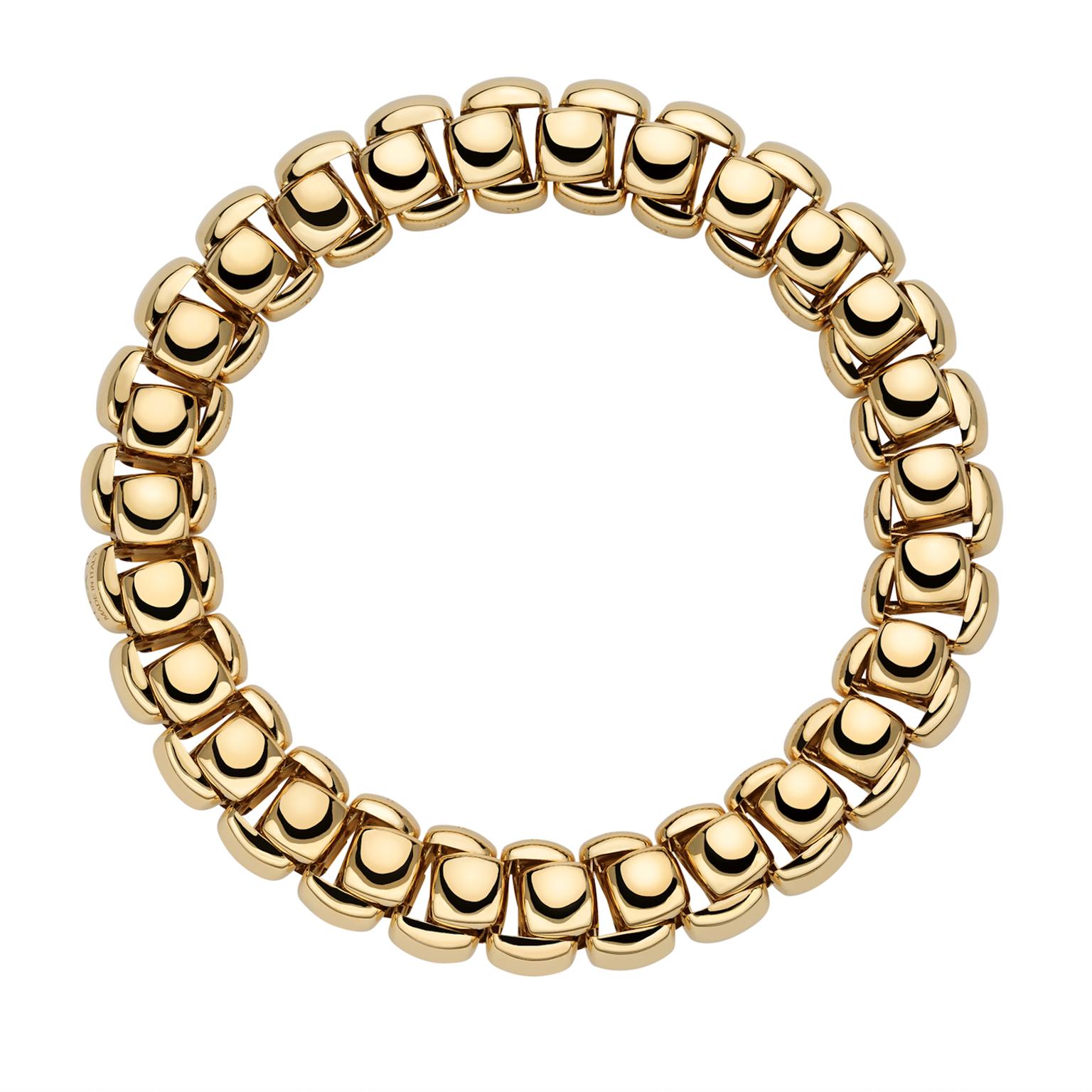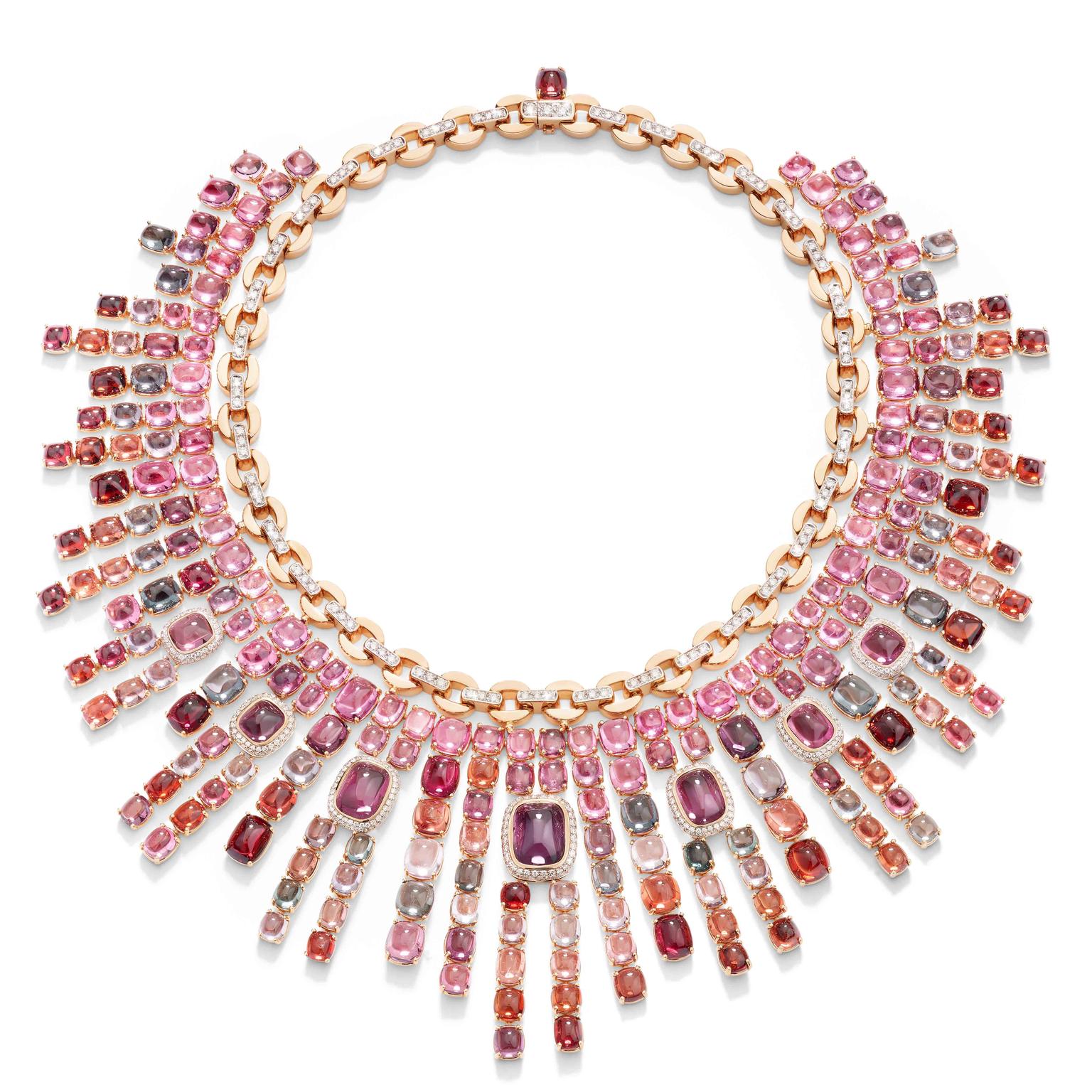We are all products of place. We hold countries, cities, our towns of birth within us; forming who we are, the shape we present to the world. So, it’s no surprise that place, and in some cases time, also informs jewellery design. Jewellery is the most personal outward expression of who we are; the best jewellery designers bring their own intimate histories to bear on their creations.
“My father was born in a house just below the Acropolis where he grew up and subsequently set up his atelier and then museum. His family originated from Delphi, another area rich in history and art. Greece as a whole, Athens and Delphi all played a very important role when he was developing his brand and creating his collections,” explains Demetra Lalaounis, director of international operations at family-owned and run fine jewellery brand Lalaounis. As if proving the point perfectly, she continues. “His family before him was creating more generic jewellery with no particular identity. However, he decided to take a very different direction. He was inspired by our country’s history and very rich cultural heritage. As he used to say about his creations ‘Every piece of jewellery has a story to tell, it is jewellery with a soul’.”
Francesca Amfitheatrof, artistic director of watches and jewellery for Louis Vuitton, took things even further for her 2023 Deep Time high jewellery collection, which is inspired by Earth’s history, tectonic shifts, evolution and even life itself. In order to really embrace these themes, Amfitheatrof took her team to the tiny island of Ventotene, off the coast of Gaeta in the Tyrrhenian sea where she has a grotto, redesigned for 21st century living, on the side of a bluff. There, to educate the team more deeply, a botanist joined to talk about early plants, a historian for a primer on ancient Rome and a geologist. Amfitheatrof even encouraged the team to make pieces of jewellery from the things they found on the walk from the harbour to the cave, some of which made it into the collection.
A different place and time took centre stage for this year’s Awakened Hands, Awakened Minds collection with Amfitheatrof transporting you back to the Paris of the 19th century, where a young 16-year-old Louis Vuitton found himself. “France in the 19th century was a phenomenal time of incredible change, and when Paris really became the centre of the world,” says Amfitheatrof,
“The design language of Awakened Hands, Awakened Minds reflects that – all its intricacies, complications and innovations – turned into incredible jewels.” It is a vast collection comprising 220 unique masterpieces with 13 themes, and all of Paris is there from cord-style fringing designed to recall the ropes used to hoist the Maison’s luggage to the instantly recognisable form of the Tour Eiffel, inverted to make a jaw-dropping necklace.
It was Milan’s divided soul that has inspired Pomellato’s most recent collection titled, rather appropriately The Dualism of Milan. “First and foremost, I wanted to convey the spirit of the city, a mix of rationalist architecture, skyscrapers with their sinuous lines, the night-time atmosphere of the shopping arcades,” Vincenzo Castaldo, Pomellato’s creative director explains. “Then I wanted to illustrate this ability that Milan has always had to focus on colour in every creation, such as the work of [architect, industrial and interior designer] Gio Ponti or [Italian design and architecture group founded by architect Ettore Sottsass] the Memphis Group [famed for its no-holds barred attitude towards use of colour].” In keeping with this duality there are two collections. Milan’s Monochromatic Treasures represents the quieter side of the city. Moonstones are used to recall the mists that often envelop the city. The building that serves as inspiration for the refined lines is the Planetario designed by architect Pietro Portaluppi in rigorous classical forms, while the rationalist forms of the Palazzo dell’Arengario in Piazza del Duomo is realised in criss-crossed rose-gold paved in white diamonds. Milanese Color Prism is the city’s vibrant side alive with coloured stones some baroque-cut and as glossy as gobstoppers, others are minute and set in mesmerising rainbow paves. “In combining these two apparently opposite faces of Milan – one concrete, the other intangible, each with its own character – this high jewellery collection gives us a true, in-depth, multi-dimensional view of the city,” says Castaldo.
Milan is far from the only Italian city immortalised in gold and precious stones. FOPE wouldn’t be the brand it is without Vicenza, the Italian city in the Veneto region in the northeast of the country it calls home. “The local art and culture have always been an inspiration for the creation of our brand’s jewellery. Vicenza is the most important goldsmithing district in Italy and this has certainly influenced the design of all of FOPE’s collections, which are based around the traditional gold mesh chains associated with the region,” explains Marilisa Cazzola, FOPE’s chief marketing officer. Claudia Piaserico, FOPE’s creative director elaborates further. “Vicenza is a UNESCO World Heritage Site because of its remarkable Palladio architecture. The work of Andrea Palladio (1508–80), based on a detailed study of classical Roman architecture, gives our city its unique appearance,” she says. “His work inspired a distinct architectural style known as Palladian, which then spread to other European countries, and to North America. The modularity of the links in FOPE’s gold meshes take inspiration from the modularity of Palladio architecture in Vicenza, while individual pieces within our high jewellery Super Eka collection mirror the same modularity in their individual design. The most important Palladio building is the Basilica Palladiana and FOPE’s brand colour, which appears in all the FOPE boutiques around the world, is the same shade as the verdigris of the Basilica’s famous copper lined domed roof, shaped like an inverted ship’s hull.”
And where would Bulgari be without Rome, from which it derives eternal inspiration. In fact, Bulgari and Rome are so entwined it has donated on numerous occasions to the upkeep of the city. It has given €1.5m to clean, reinforce and protect its famous Spanish steps. In 2015 and 2016, it funded the restoration of the polychrome floor mosaic of the Caracalla Baths that date back to the 2nd century and which had not been visible for over 40 years. Bulgari also provided funds to build and install walkways and other services to the Sacred Area of Largo di Torre Argentina – a square containing four temples ranging in age from 4th to the 2nd century BC where, it is alleged, Julius Caesar was assassinated.
It's a beautiful circle. Rome inspired Bulgari. Bulgari returns the favour and, as a thank you, restores that which inspired it. Meaning the Eternal City remains, allowing it to spark someone else’s creative imagination.


























